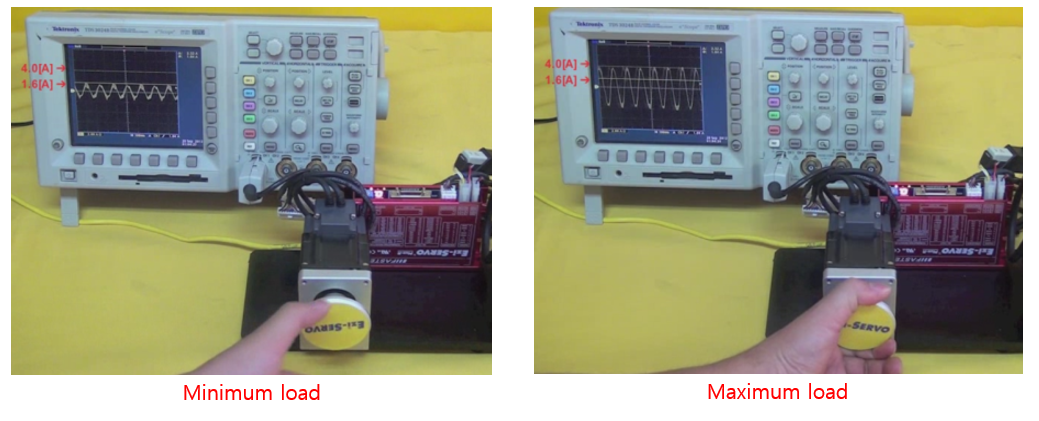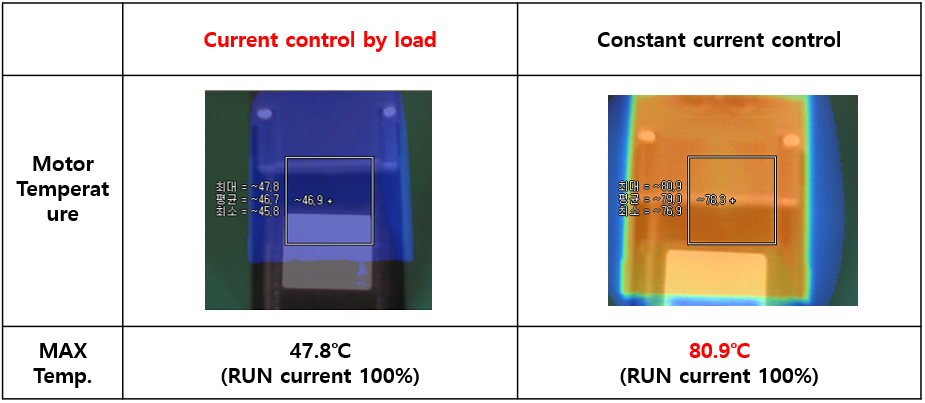| Category | Products Capacity |
| Title | 09. Would like to replace Servo system by FASTECH products but little bit concern about step motor temperature. What is FASTECH product motor temperature specification? |
|
Normal step motors are using Insulation Class B, and guarantee the 20,000 hour at 130℃. (100 ℃ - 100,000 Hour Life Guarantee) FASTECH products use stepping motors and have high torque characteristics at low speeds. Therefore, heat is generated due to high energy consumption due to the characteristics of maintaining high torques in general equipment applications. Also FASTECH adopts Boost Current function onto our products to prevent losing of torque under high speed range and it is very much differentiated from other conventional stepping motor system. In this case, little bit less performance of temperature can be expected, so please consult with FASTECH sales team of our distributor before selection of product.
This figure compares the current status according to the load status of the motor.
Current value is 1.6A under Min. Load (No Load), and 4.0A under Max. Load. (Based on 60mm motor) So it automatically controls according to load variation. Therefore, it can suppress motor heating.
< Temperature change of motor by Run current in FASTECH product>
|
|
| Files | 200115_FAQ09_ENG.pdf |
| List |





